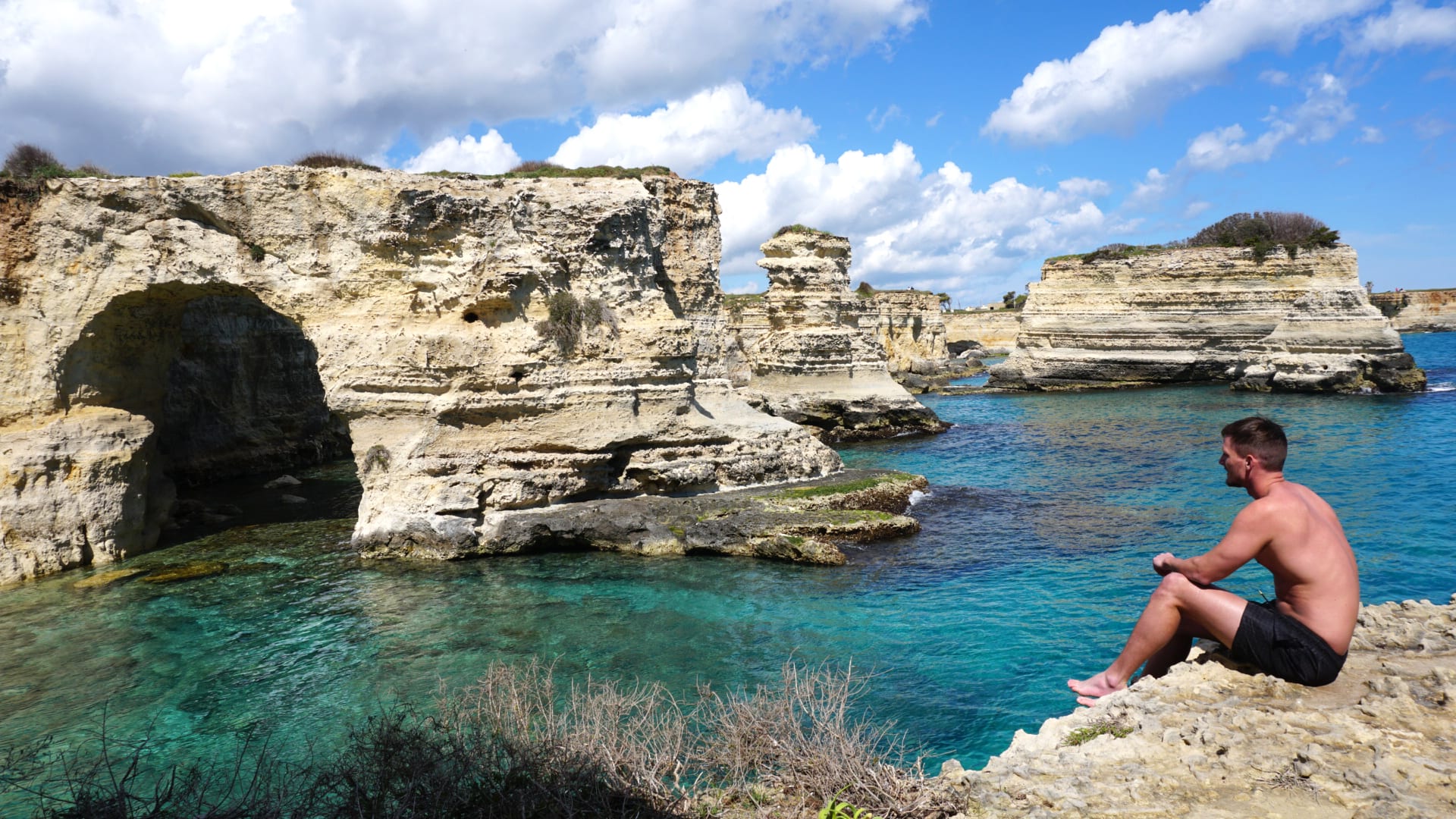There are two Italy’s: the Italy in your head–basked in warm sunlight and humming with the bickering of lively Italian country folk–and the actual Italy, which is overrun by hoards of tourist caravans and selfie stick armies. Jason Horowitz of the New York Times aptly described the current state of affairs in Italy’s largest tourist destination, Venice, when he suggested that it had become a sort of ‘Disneyland on the Sea.’ And, in many aspects, Mr. Horowitz is spot on–the secret is out and Italy has gone from untraveled to overtraveled.
So you can imagine my surprise when I found myself entirely and utterly alone on the white cliffs of Torre Sant’andrea on a recent afternoon. Armed with nothing but a towel I pilfered from my Airbnb and a tube of supermarket cookies, I carefully scaled the slimy limestone cliffs and made my way down to the water.
Once I reached the sea’s rocky shore, I was unexpectedly overcome with a sense of panic. The sea was calm and crystalline blue, but the scene was remarkably quiet (too quiet?) and there wasn’t another human being for at least another mile in any direction.
Should I get in the water? Is it safe to get in the water? How high is this cliff? OK Google, are there sharks in the Adriatic sea? OK Google, but are there great whites in the Adriatic sea?
My mind raced with thoughts of everything that could go wrong. My stomach lurched.
Then I jumped off the cliff.
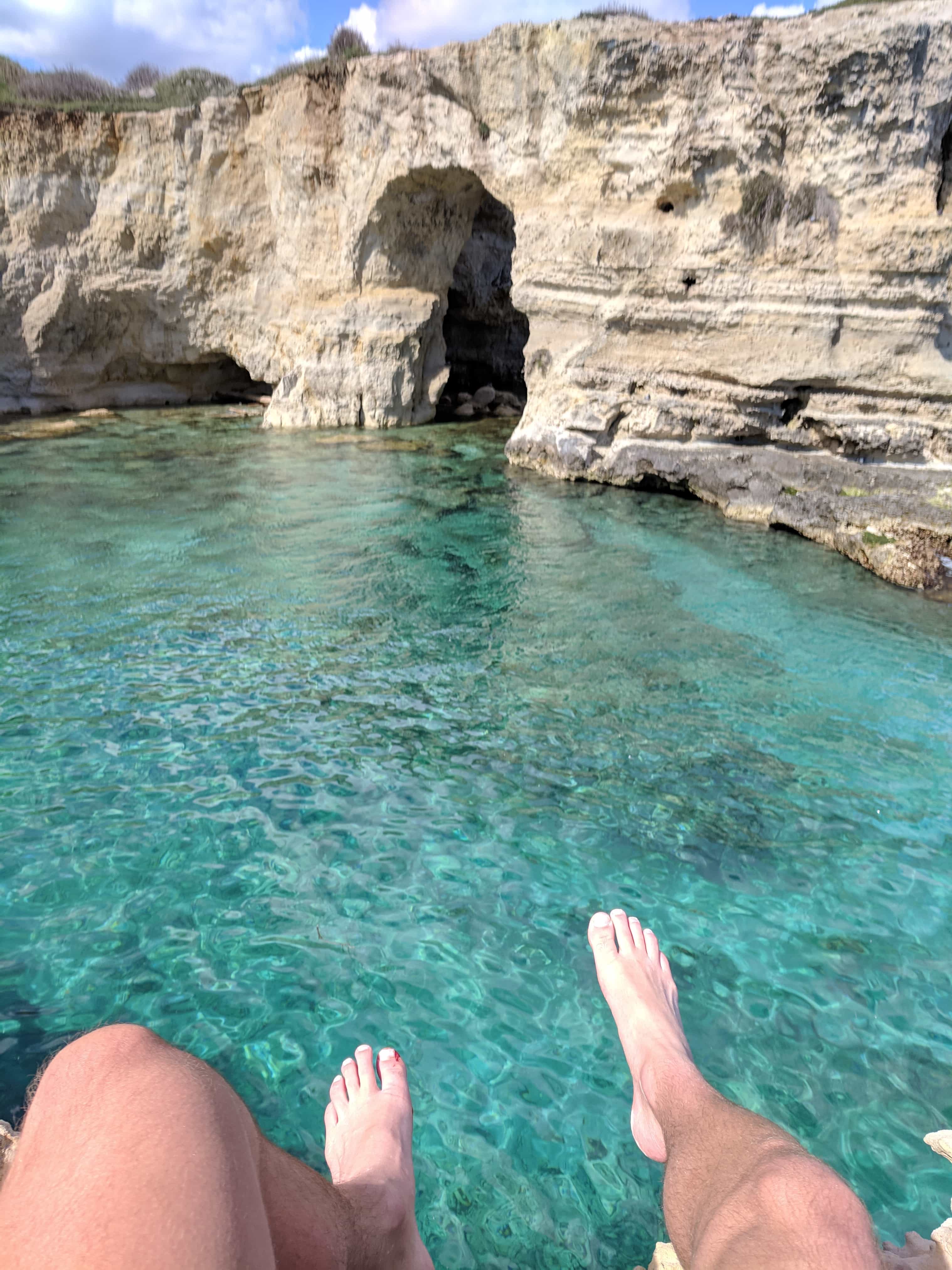
Puglia, the region of Italy’s far southeastern coast (also called Apulia), isn’t the gimmicky and played-out Italy I had come to know elsewhere on the Boot. Puglia has managed to remain Italy in all of her glory–silent, lively, quaint, grand, warm, formidable.
In fact, I have mixed feelings even promoting Puglia as a travel destination. My visit there felt so exclusive and low-key that I would hate to encourage more tourism in one of Italy’s last frontiers. But a digital nomad gotta eat so here are the 5 reasons you should visit Puglia, and soon.
Reason #1: Puglia’s Towns are Unique
Located a considerable distance from the cosmopolitan centers of Rome and Milan, Puglia has its own identity and a history that spans many centuries. Its first settlers were of Greek origin and Puglia’s many towns and cities were established as agrarian communities. Even today, Puglia is known for its agricultural products and its vast expanses of olive orchards.
Given its humble roots, it’s no surprise that Puglia has remained relatively low-key. Its transportation infrastructure isn’t as developed as what you’ll find in the North and there aren’t as many amenities for foreign tourists.
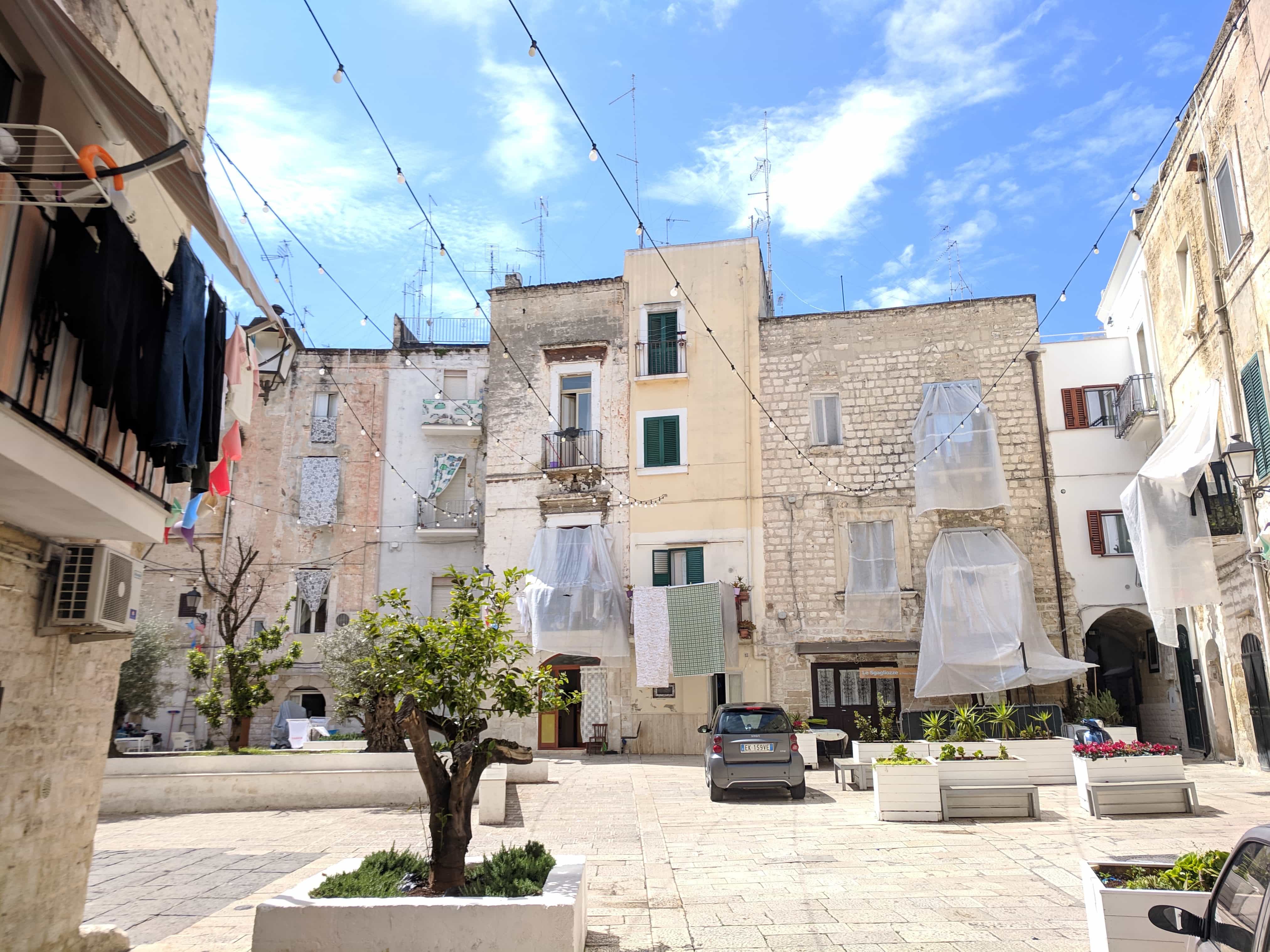
While I typically avoid driving in Europe, I decided to break my own rule and rent a car in Bari so that I could explore the region thoroughly. Driving from destination to destination was actually enjoyable as the drive took me through some incredible scenery. All along my route I passed vast stretches of olive orchards and quaint trullo houses with stone roofs.
From Bari, my first stop was Matera, the oldest inhabited town in all of Italy and one of the oldest inhabited places in the world.
Reason #2: Matera is Unlike Anything You’ve Ever Seen
Arriving in Matera, you won’t notice anything extraordinary. The city’s streets are lined with apartment blocks, neat cafes, and small shops.
After a short drive through the city’s main drag, I arrived at a neat parking structure where I parked my rental car in an impossibly crammed space. And by impossibly crammed, I mean to say that the parking spaces were literally smaller than the size of a car. Europe’s parking structures are clearly designed by sadists.
From the shrine of sadism where I parked my vehicle, it was only a short walk to the city’s historic center and its main attraction, the sassi.
The sassi are cave dwellings dug into the side of Matera’s mountain. The dwellings, which are carved in a variety of shapes and configurations, are the true treasure of Matera. Cave drawings dating all the way back to the tenth century BC have been discovered here and the entire town looks like something out of ancient Syria.

In more recent history, the sassi gained notoriety for another reason–squalid living conditions. Up until the 1950’s the sassi were lived in as residences and housed some of the most impoverished people on the Italian peninsula. The city’s dense layout and ill-equipped cave dwellings created waste management problems and facilitated the spread of infectious diseases. The town had devolved into a slum that resembled Brazil’s favelas more closely than an Italian village.
To combat the town’s decline, which had become an embarrassment for the state’s government, the sassi’s residents were ordered to evacuate in 1952. Since then, an effort has been made to repopulate the sassi and re-purpose its cave dwellings as bed and breakfasts, museums, and restaurants.
This is a city that you can spend all day exploring as the city’s design is sporadic and full of hidden treasures. In particular, you won’t want to miss the city’s great churches and excellent lookout points.
Reason #3: Lecce is Insanely Beautiful
Traveling south from Matera, I made my way to the very tip of the heel of Italy’s boot and into the city of Lecce. Lecce is an old city and was established over two-thousand years ago by Greek settlers from the island of Crete. Its baroque architecture is well-known and has earned Lecce the nickname, “Florence of the South.”
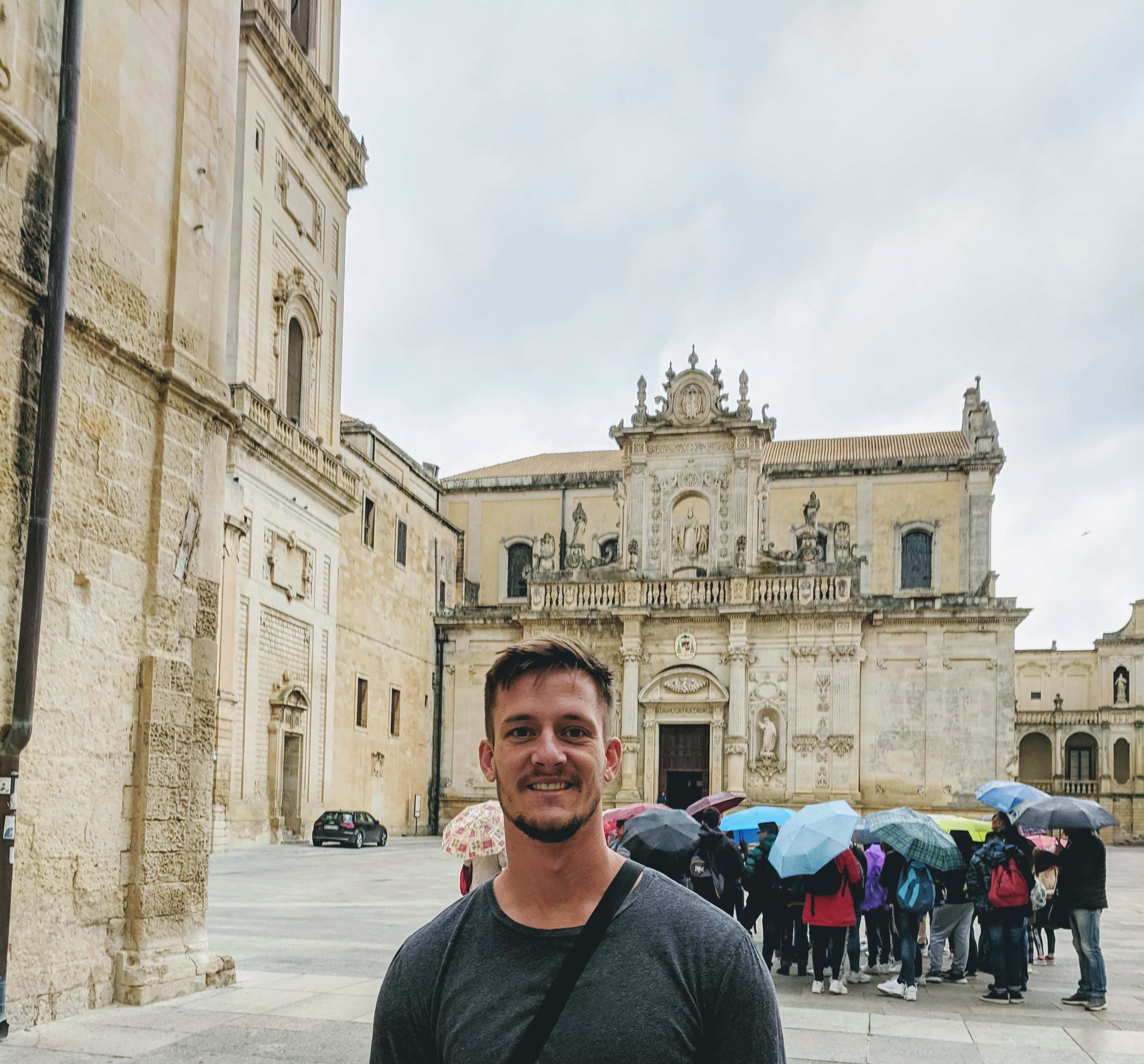
Feeling adventurous, I decided to take a self-guided tour of Lecce’s historic tour on foot. The historic center was a good thirty-minute walk from my Airbnb so I brought an umbrella just in case the overcast weather decided to turn into rain.
On my tour, I took in the tremendous atmosphere of Lecce’s historic center. The buildings and columns there are all built from a type of limestone, known as “Lecce Stone,” that is milky in color and smooth in texture. The ubiquitous Lecce Stone gives the city a uniform and sleek vibe. Cactus plants sit outside of the shops and bougainvillea vines accent the otherwise monochrome scene.
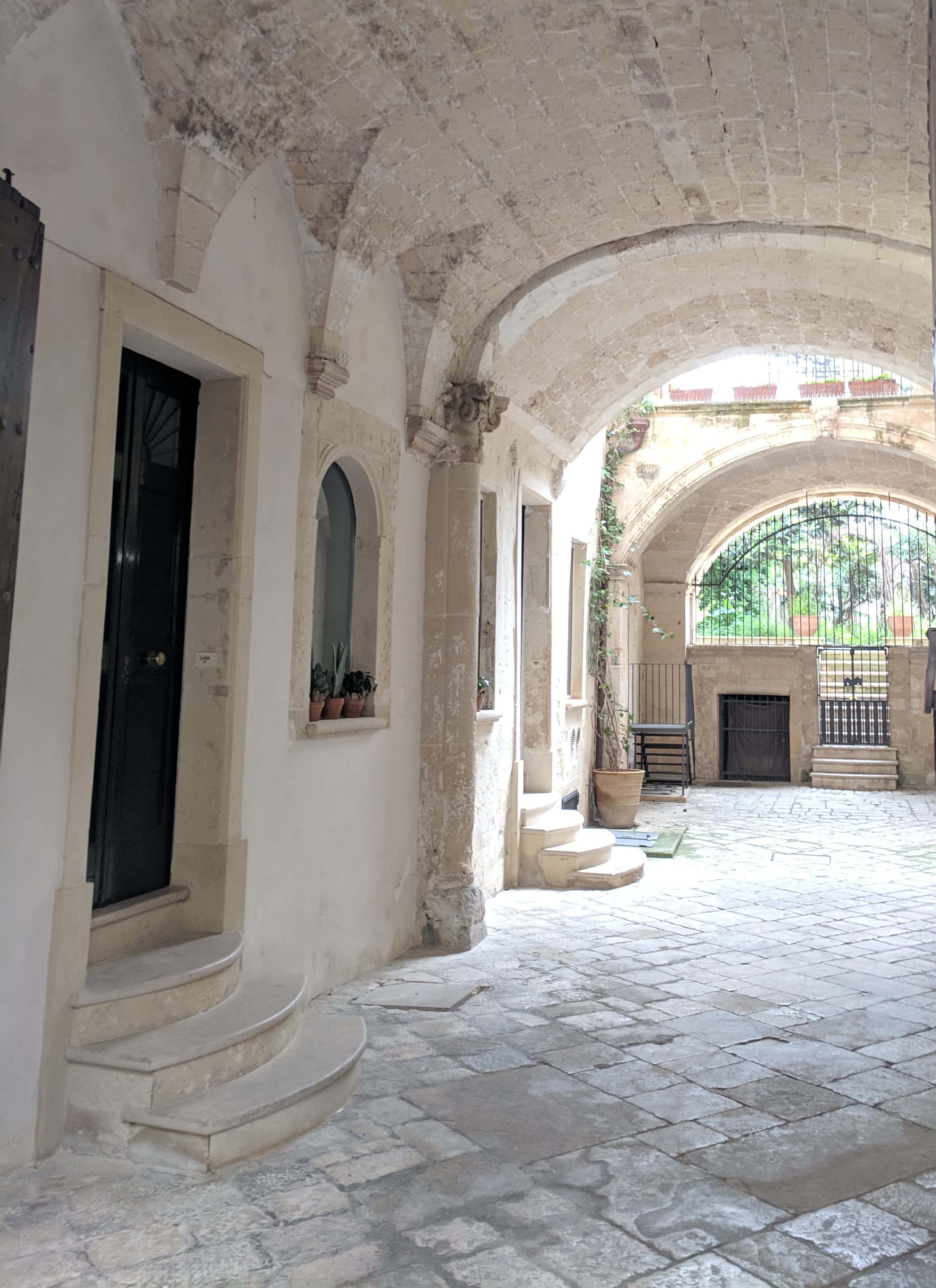
I visited the amazing Basilica di Santa Croce, the Cattedrale dell’Assunzione della Virgine, and the Roman Amphitheater. Puglia’s cathedrals and churches are distinguished from their counterparts in the North by their relative simplicity. While the Cattedrale dell’Assunzione della Virgine boasts an ornate baroque exterior, its interior is less lavish than what you might find at the Vatican.
I came across the city’s symphonic orchestra, which was rehearsing near the library. I took a moment to linger on the steps of the orchestra’s practice room and helped myself to a free mini concert of classical music. I reflected on how peaceful Lecce was in comparison to Naples or Bari. This made sense, of course, as the city’s population is under 100 thousand residents.
Before my tour came to an end, the overcast weather had turned to full-on rain. Here’s a tip: Uber doesn’t operate in the Puglia region–a lesson I was forced to learn the hard way. Lecce’s narrow walkways quickly turned into miniature rivers and I faced a pretty eventful walk back to my Airbnb.
Lecce is an amazing city that is definitely worth visiting. Its authentic and humble charm make it an ideal destination for the curious untraveler.
Reason #4: Puglia’s Coastline Rivals Amalfi
After being thoroughly rained on in Lecce, I decided to head back toward Bari and through some of Puglia’s beautiful sea towns.
The first town I stopped in was Torre Sant’andrea. Italy shocks me with its casual, nonchalant beach towns. On my drive into Torre Sant’andrea, I passed fields of bright red poppies, trullo homes, and more olive trees. Then, seemingly out of nowhere, the rural countryside gave way to a pristine coast and some amazing views of the Adriatic Sea.
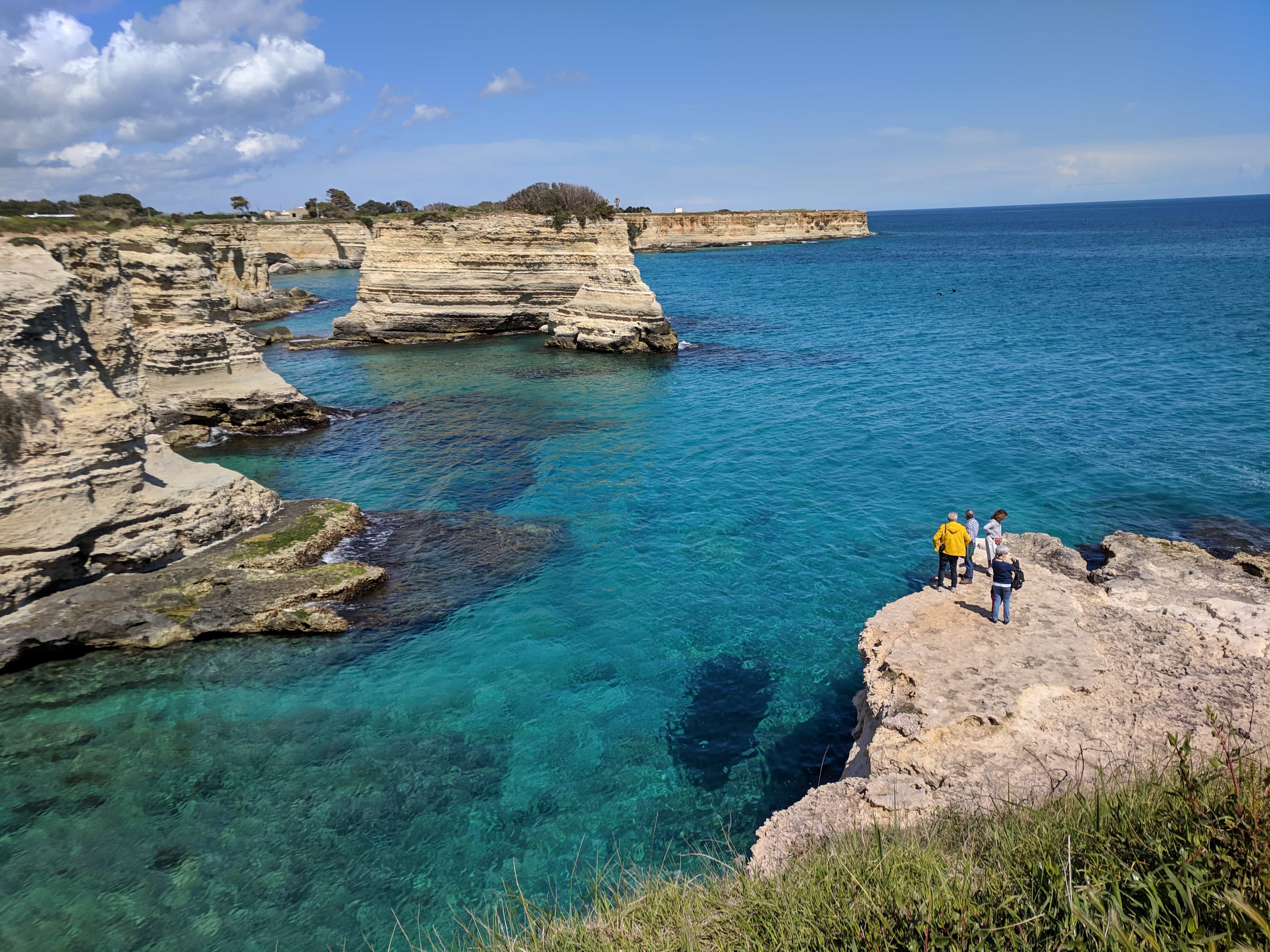
Because I was traveling during the off season (late April), Torre Sant’andrea was entirely empty except for a handful of tourists. The weather was in the mid seventies, so I went for a dip in the crystal blue water.
While I was lucky to be the only one at the beach that day, I understand that this spot can get pretty crowded during high season. If you want the beach all to yourself, then you might want to consider visiting before it gets stormed by summer breakers.
Following my brief dip in the big blue, I headed back into town and found a seat at a low-key seafood restaurant. I enjoyed tasty fried fish with rosemary and a dish I could only describe as “fishy spaghetti.” Both were incredibly delicious and the waitress even offered to pack up my leftovers in a doggy box (this doesn’t usually happen in Europe, so I was stoked).
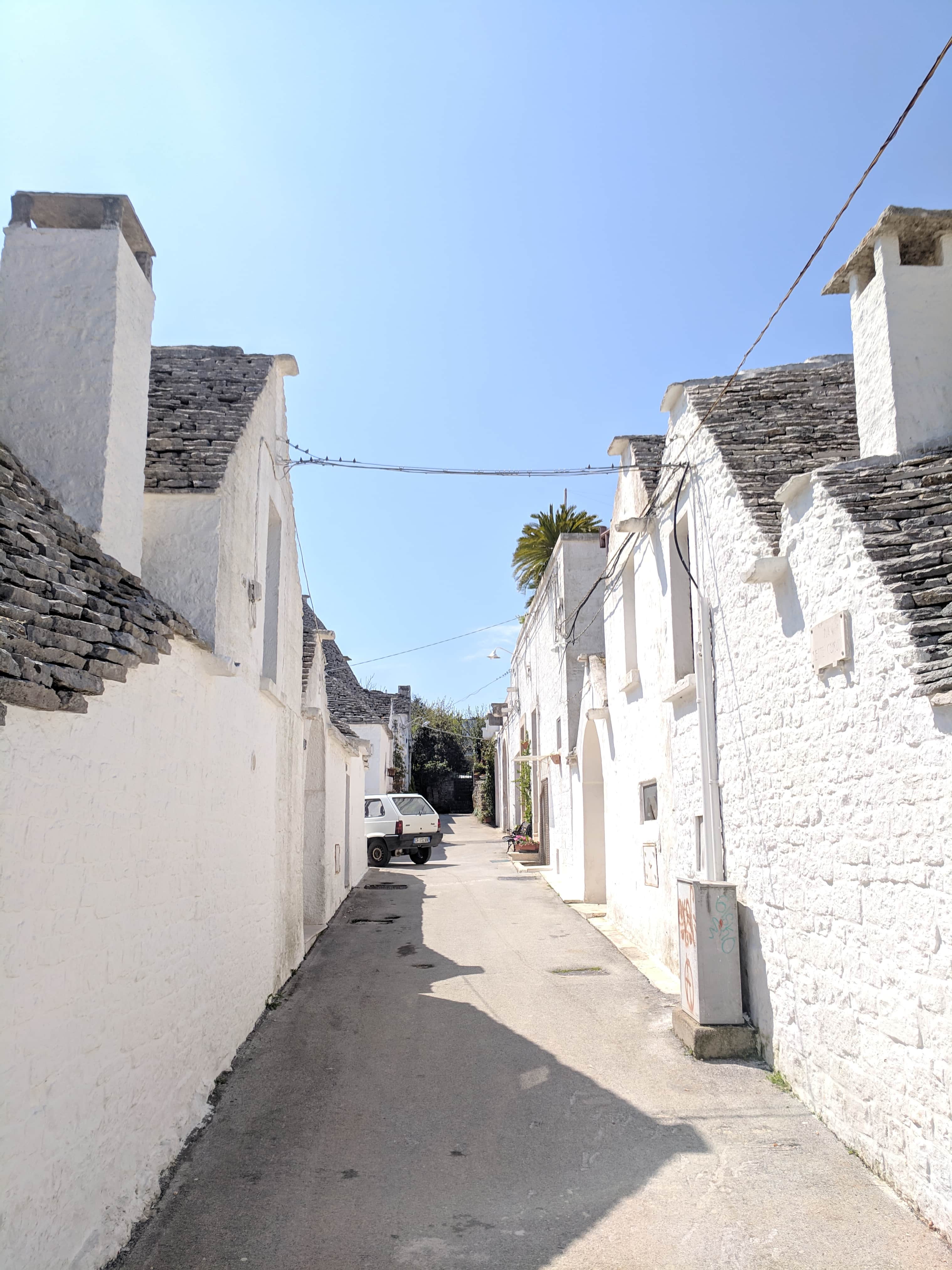
The staff was insanely friendly and I got the impression that foreign tourists were a kind of rarity in their town. Nobody spoke English, so I had to get by with my sketchy-at-best Italian. Nonetheless, everyone at the restaurant was very warm towards me and made me feel right at home.
While Torre Sant’andrea is a beauty, you shouldn’t neglect Puglia’s other stunning beach towns. Polignano a Mare is especially well-known and no visit to the region would be complete without a stop there. Unfortunately, my trip to Polignano a Mare got rained out, so my visit to the region wasn’t complete… lol. Til next time!
Reason #5: The Swellest Folks in all of Italy
Finally, Puglia is home to some of the warmest, simplest, and most friendly people in all of Italy. I generally find Southern Italy to be an incredibly welcoming and friendly place, and Puglia is no exception in this regard.
Maybe native Apulians haven’t interacted with enough tourists to know what a hassle we can be, but everywhere I went people went out of their way to accommodate me and make me feel like they wanted me there. The people I met were patient with my limited Italian and eager to learn all about me.
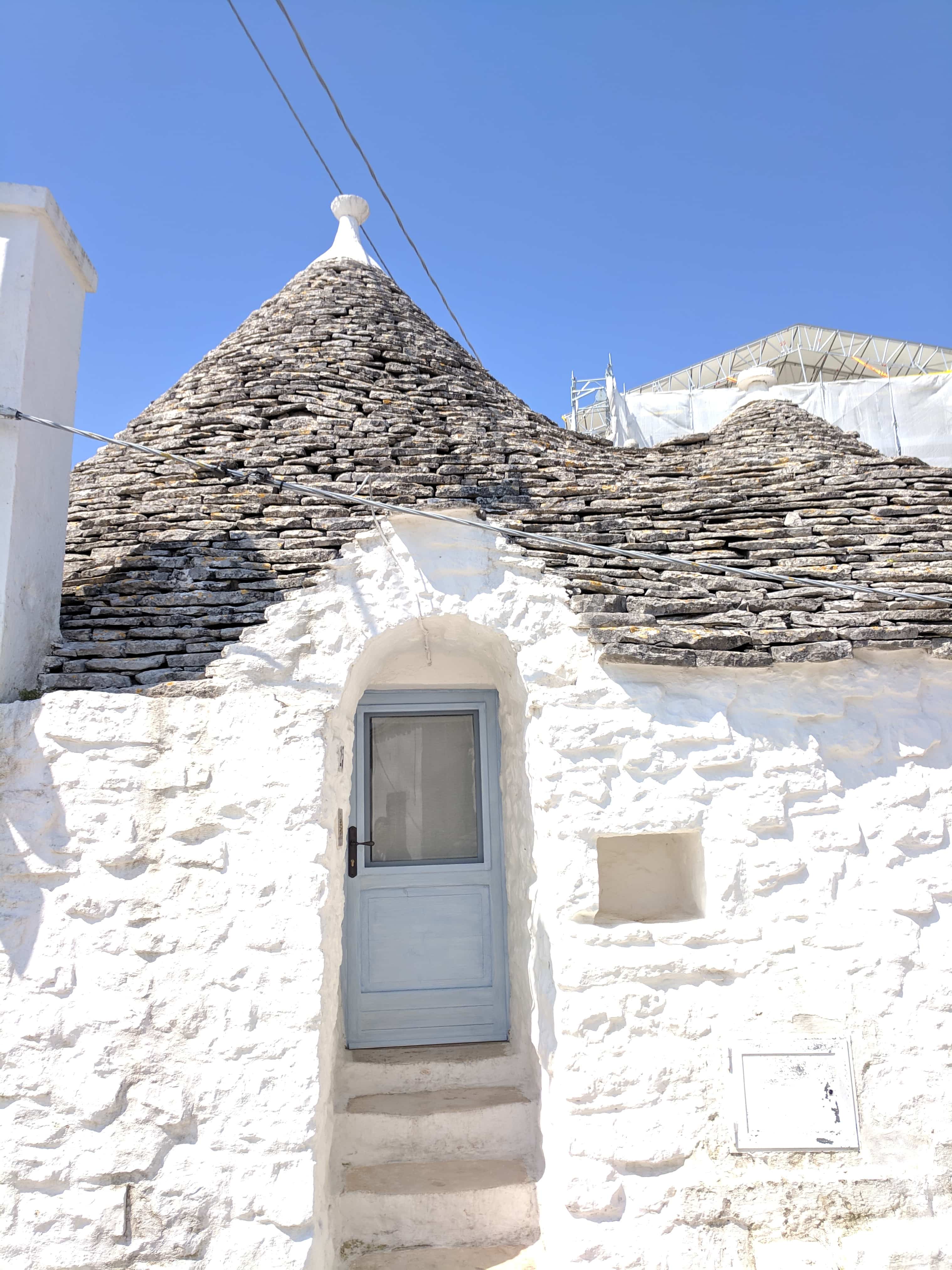
Buuuuut there was one major exception. As I returned my rental car in Bari, it was discovered that at some point during my trip my rental car was keyed. Maybe I took someone’s parking spot outside of my Airbnb or maybe I unknowingly threw shade at the wrong person, but in any case I had to pay a fat fee of 300 EUR for the incurred damage (so much for traveling on a budget).
So, while the people of Puglia are truly some of the kindest people in all of Italy, the region may be a bit more sketchy and rough around the edges. If you rent a car, just be sure to get the additional insurance. You never know when the mafia will come to key your car, and it’s better to be safe than sorry and over budget (womp_).

